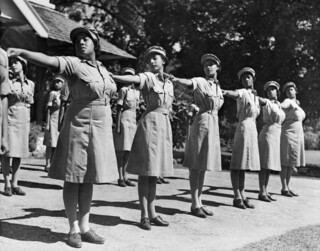Battle of the Caribbean
Colin Douglas
On 6 June 1944, more than 150,000 Allied troops landed on the beaches of Normandy. Once the beach-head was secured, even greater numbers arrived in France to swell the multinational force. African, Asian and Caribbean troops were among those who fought in Western Europe against the Nazis alongside the British and Americans.
The role that Europe’s Caribbean colonies played in the Second World War has often been overlooked. In the years leading up to the war, much of the region was in the grip of civil and industrial unrest as people struggled against the poverty and injustice of colonial rule. Yet once war was declared, a combination of revulsion at the racial ideology of the Nazis and a sense of loyalty to the ‘motherland’ led most of the region to swing behind the Allies.
The Caribbean provided essential mineral resources, personnel and the geopolitical leverage to draw the United States closer to the Allies long before it formally entered the war. Across the British West Indies rationing was introduced, blackouts were common in upland and coastal areas, and thousands of civilians were killed by submarine attacks on merchant ships, passenger liners and the smaller schooners that transported goods between the islands. In the French West Indies and Puerto Rico, many people were on the verge of starvation for periods of 1942 and 1943.
In February 1942, two months after the US joined the war, German U-boats launched a massive attack on the Caribbean. A third of Britain’s petroleum imports came from the region – from the oil fields and refineries of Trinidad, and from the Dutch West Indian colonies of Aruba and Curaçao, which had the largest oil refineries in the world.
The US, too, imported oil from West Indian refineries, despite being a major producer itself. And much of its domestic supply was transported by sea from Texas to the commercial and industrial heartlands of the East Coast. The Caribbean was also the only source of bauxite (aluminium ore) for the aircraft and munitions industries in Britain, as well as supplying the US (itself a bauxite producer).
The submarine assault of 1942, sometimes known as the Battle of the Caribbean, was therefore potentially catastrophic. Britain was ill-equipped to defend its West Indian colonies, with the Royal Navy overstretched and in desperate need of ships. The US Navy was new to the war and fought a losing battle for most of the year. To make matters worse, the intelligence breakthrough at Bletchley Park was undone only days before the launch of the Caribbean U-boat campaign, when Germany made changes to its Enigma machines and codes.
As the Allies floundered, the Caribbean became the most dangerous shipping zone in the world. Over the course of the year, 337 vessels were sunk. The impact of these losses was immediate both for the people of the region and the wider Allied effort. The US could not commit to a European invasion until its own backyard was safe.
Connie Mark, who joined the Auxiliary Territorial Service in Jamaica (the women’s branch of the army) remembered the attacks: ‘If a boat was torpedoed (as happened off St Lucia) when you were expecting oil, then the island would be short of oil … I had a friend who went to England to take her piano finals … and when she was coming back her ship was torpedoed.’
Despite the formal lifting of the colour bar on military recruitment for the duration of the war, the War Office prevented the creation of a Caribbean combat unit even when it was proposed by Churchill. For years, the Colonial Office tried desperately to overcome the War Office’s recalcitrance. The Colonial Office feared they might lose the support of the Caribbean, and face civil unrest, if people became aware of the War Office’s racism. Months before D-Day, the British government finally agreed to create a Caribbean Regiment.
Before that, West Indian volunteers travelled to Britain, Canada and the US in their tens of thousands to serve in the war effort. They worked in the oil and bauxite industries at home, and as merchant sailors, maintaining the flow of vital resources to the Allies. More than six thousand served in the RAF, which embraced West Indian recruits many years before other parts of the military.
After the war ended, the unfinished business of decolonisation that had been put on hold during the conflict returned, and the weakened colonial rulers were in no position to resist the demand for change in the decades after 1945.
In Britain, meanwhile, whose bombed cities and social infrastructure needed to be rebuilt, West Indians were again called on for help. Many of those who crossed the Atlantic on the Empire Windrush in June 1948 were returning to the UK, having served here during the war, and would again experience the ambivalence of a British state that wanted them to serve, but didn’t want them to stay.

Comments
So afterwards Reconstruction failed and another century of violent discrimination ensued.